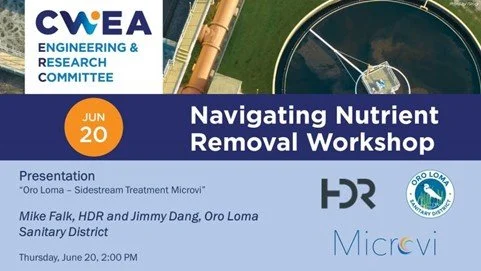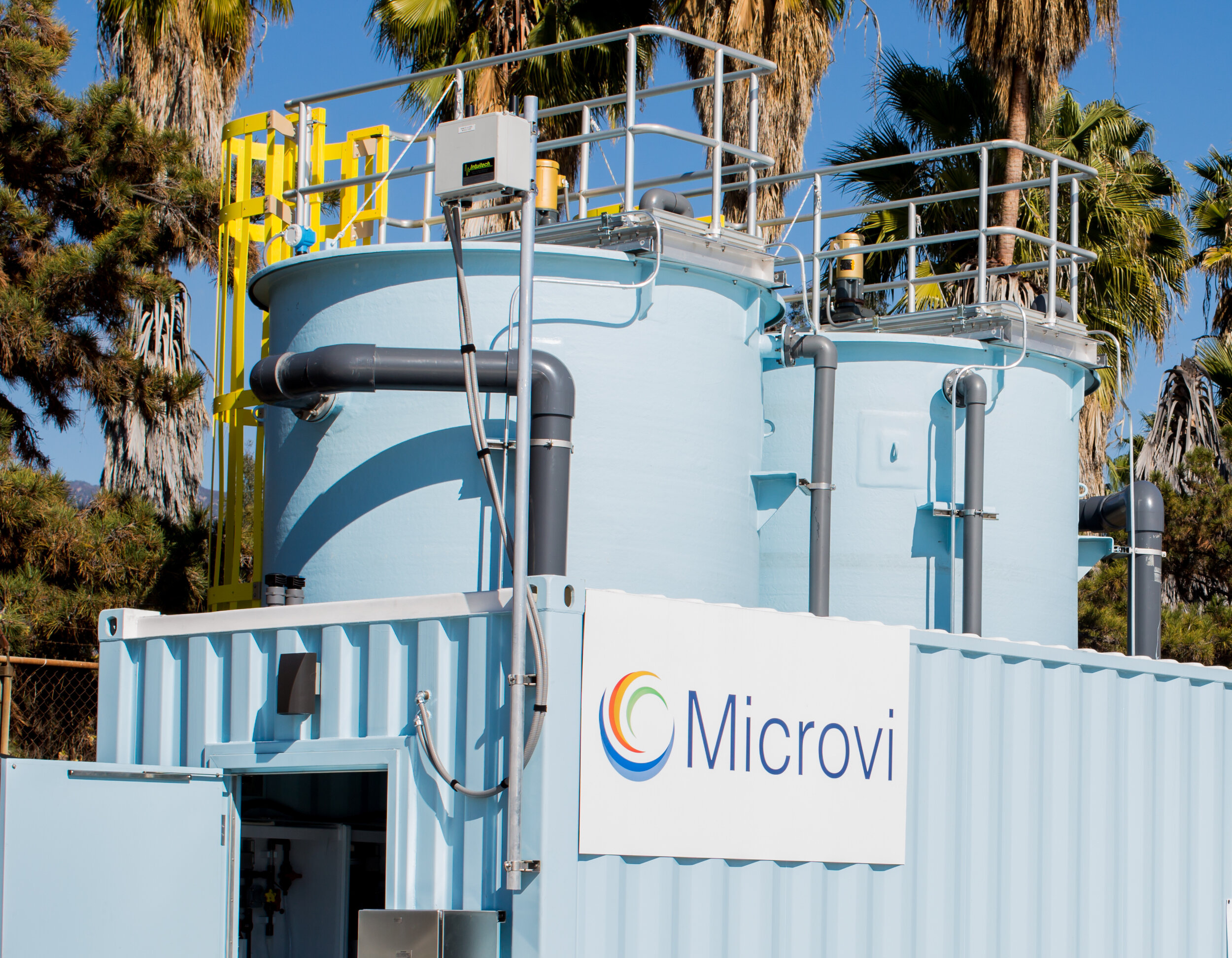As new nutrient regulations loom for the San Francisco Bay area, the need for effective nitrogen removal solutions is more critical than ever. Microvi is proud to announce its participation in the California Water Environment Association’s (CWEA) Navigating Nutrient Removal Workshop on June 20, 2024, in Walnut Creek, California.
Read MoreArizona Water Company, in collaboration with Microvi Biotech, Inc., has been awarded $9.1 million in funding from the United States Bureau of Reclamation’s WaterSMART program. This funding will support the Stanfield Groundwater Supply and Treatment Project, a critical initiative to address nitrate and arsenic contamination and ensure clean, safe drinking water for the rural community of Stanfield, Arizona.
Read MoreMicrovi Biotech, in collaboration with Oro Loma Sanitary District and HDR, celebrates three years of success since the commissioning of its groundbreaking Sidestream treatment technology. This milestone underscores the transformative potential of innovative wastewater treatment solutions in promoting environmental sustainability and public health.
Read MoreNexilico has received NIH funding to develop innovative microbiome-based solutions to address the harmful effects of xenobiotics—environmental toxins found in food, water, and other sources. Partnering with UC Berkeley and Microvi Biotech, the project will leverage the transformative power of the gut microbiome to detoxify these substances, with a focus on arsenic, one of the most dangerous environmental toxins affecting millions worldwide.
Read MoreMicrovi and the City of Goodyear unveil Arizona’s first groundwater biological nitrate treatment system. With climate change creating uncertainty in future water supplies and population changes leading to ever-increasing demands, the future of drinking water resources will continue to be a challenge for water managers. Goodyear has reduced risk by implementing Microvi’s commercial groundwater treatment system – their investment ensures Goodyear continues to meet the water needs of their residents.
Read More“We are excited to finalize this new technology for such a significant problem that affects the health of millions of people around globe,” said Dr. Fatemeh Shirazi, CEO of Microvi. “Our commitment to our customers in the drinking water industry has always been to offer the most reliable, advanced, safe, and cost-effective treatment technologies.”
Read More“Sunny Slope Water Company has attracted visitors from all over the world to see Microvi’s system in action,” said Ken Tcheng, General Manager of Sunny Slope Water Company. “Microvi’s high-performance system has been consistently verified by stringent water quality testing. Tens of thousands of households in our service area have been able to enjoy clean water and low costs offered by the Microvi system at Sunny Slope Water Company.”
Read MoreMicrovi’s nitrate treatment system features a stainless steel reactor which houses the MNE biocatalysts for nitrate removal, followed by an ultrafiltration membrane system and a disinfection system, which together polish the treated water from the reactor for potable use. The plant is controlled via an automated control system which is programmed for exact chemical dosing based on incoming nitrate levels and nitrate sampling via an on-line nitrate sensor. The system is equipped with remote control capabilities and requires minimum operator interference.
Read MoreWhile initial estimates predicted a 50% savings for operational costs compared to alternative treatment technologies, a recent data analysis found that a 75% cost savings has been demonstrated. The system has also proven a key advantage of Microvi’s sustainable biology approach where little or no biological waste has been produced over more than 48 months of operation.
Read MoreThe City of Modesto and Elemental Excelerator partner with Microvi to demonstrate autonomous treatment system capabilities, providing clean water access for Central California communities.
Read MoreThis funding will specifically support Microvi in integrating specialized, high-throughput equipment to optimize material usage, reduce labor requirements, and promote liquid and chemical recycling—thereby contributing to Microvi’s accelerated global commercialization.
Read MoreMicrovi announced today that they were awarded a grant from the National Institute of Environmental Health Services (NIEHS) to develop a new technology for efficient, environmentally friendly, and cost-effective hexavalent chromium (Cr(VI)) treatment.
Read MoreGiven constraints on freshwater in agricultural regions there is a drive to adopt sustainable water practices through water reuse. The fresh produce industry is one of the largest agricultural users of water with significant potential for water reuse. Microvi MNE leverages engineered biocatalysts to safely and rapidly reduce the levels of dissolved organic and inorganic compounds in wash water under very low temperatures, without contributing solids or secondary wastes to the wash water.
Read MoreElemental Excelerator is a growth accelerator focused on improving systems that impact people’s lives. Microvi has received funding as part of Elemental’s Equity and Access Track to implement projects focused on nitrate removal in contaminated drinking water for low- to moderate-income communities in California.
Read MoreStudies completed over the past year, funded through a Phase II NIH grant, show unprecedented removal rates of 1,2,3-Trichloropropane (TCP) and co-contaminants using Microvi’s cometabolism treatment technology.
Read MoreMicrovi Biotechnologies announced today that they received an Honor Award for their Microvi MNE™ process for nitrate removal from drinking water as part of the 44th Kirkpatrick Chemical Engineering Achievement Awards.
Read MoreThe talk, entitled “Bioprocess development for 1,4-dioxane treatment: Bench through field investigation,” will be delivered by Microvi’s Director of Innovation Research Ameen Razavi. It explores the challenges of dioxane remediation.
Read MoreThe awards by the East Bay Economic Development Alliance (EDA) celebrate cutting-edge innovators in business that make the East Bay area one of the preeminent regions of innovation in the nation. The East Bay EDA is a public–private partnership founded in 1990 to serve the East Bay area.
Read MoreMicrovi and Sunny Slope have partnered to bring this elegant and proven solution, first implemented for remote communities in Western Australia, to help address the water crisis in Southern California.
Read MoreMicrovi’s technology uses specialized natural organisms to remove an unprecedented amount of phosphorus from any body of water, including wastewater, to below 0.1 mg/L phosphorus. It also enables recovery of the nutrient so it can be converted into agricultural fertilizer.
Read More











